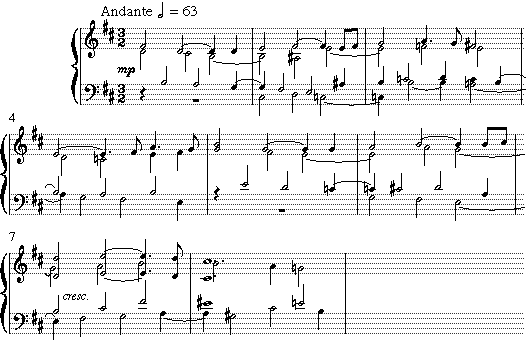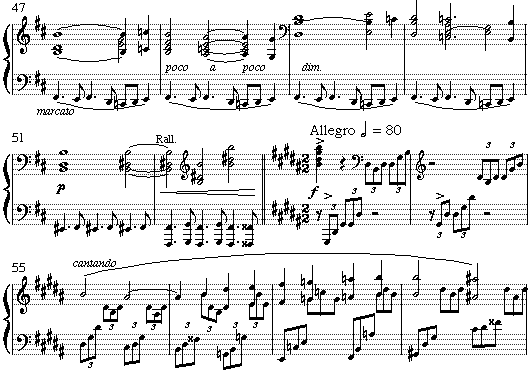
Among Fauré's music series, nocturnes are most important and popular. 'Nocturnes' lead images of nighst, quietness and vagueness, and his nocturnes have almost all of these features.
The most popular No.6 consists of three parts. His virtues, for example sincerity, nobleness and mighty are showed in this piece.
The thirteenth nocturne is his last nocturne and his last solo piano work. They say that it is one of the greatest works in his works.
This work has three-in-one (A-B-A') form. The beginning of 8 bars are as follows.
The music is beautiful, and the score is also beautiful.
Four voices flow with subtle suspensions in narrow spaces.
Soprano melody (A1) is often used.

Next melody (A2) seems to be base on ancient mode, and bass get to move.

After then, dotted melody (A3) appears.

Bridge between A and B is as if stressed power released and explode.

Marinkyo's School > Fauré's Room > Nocturnes